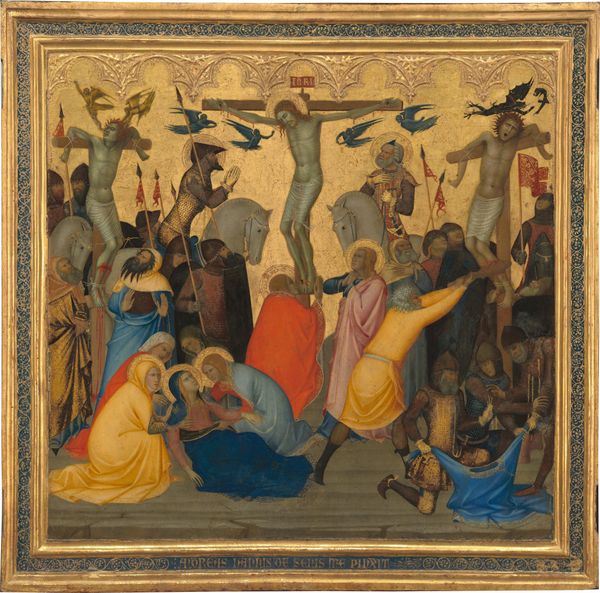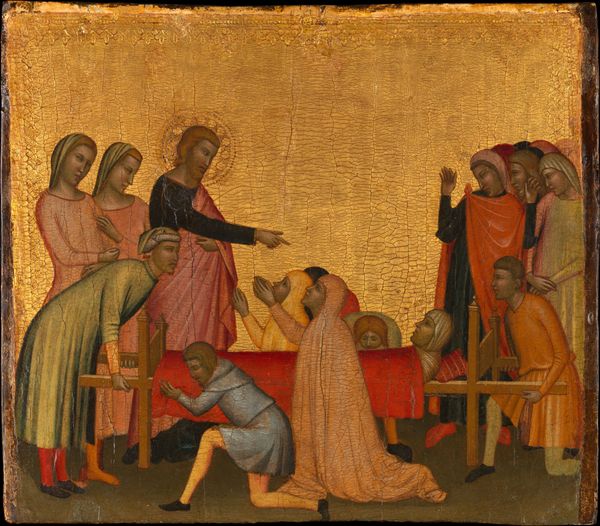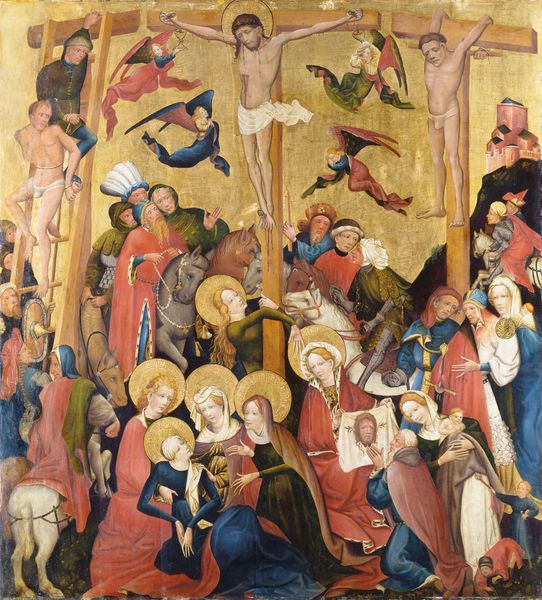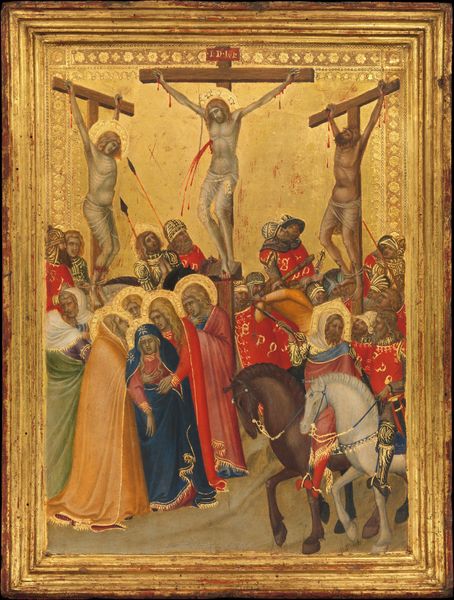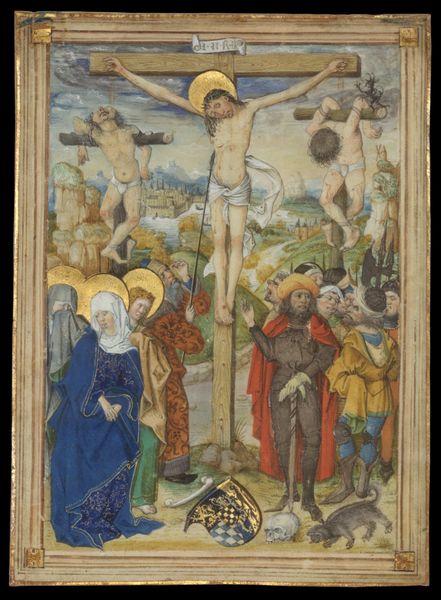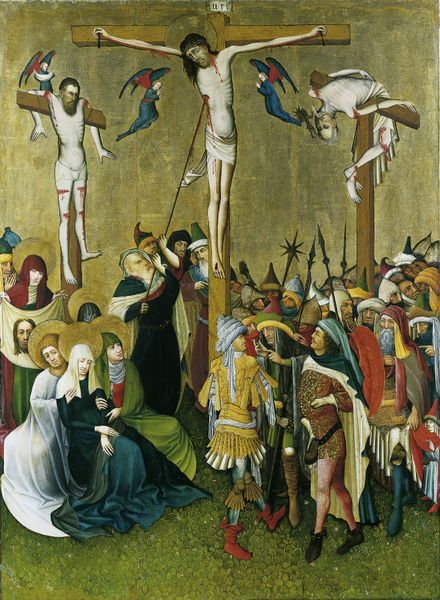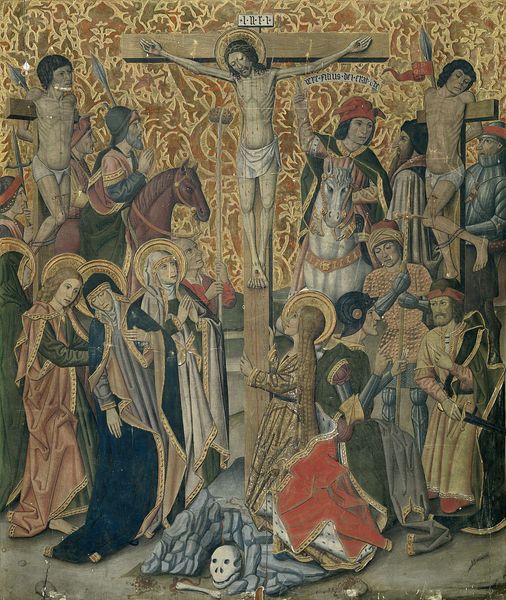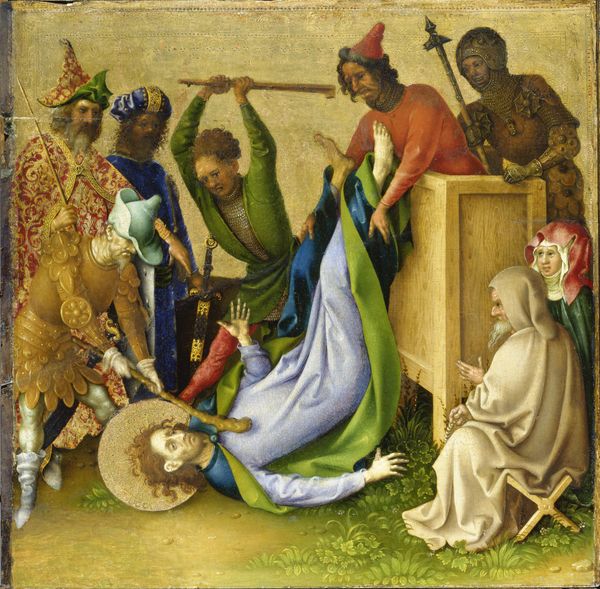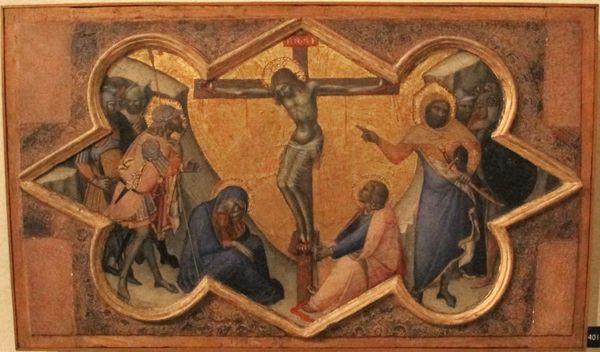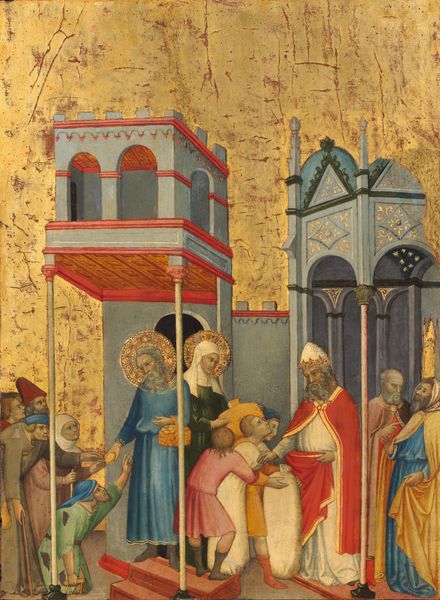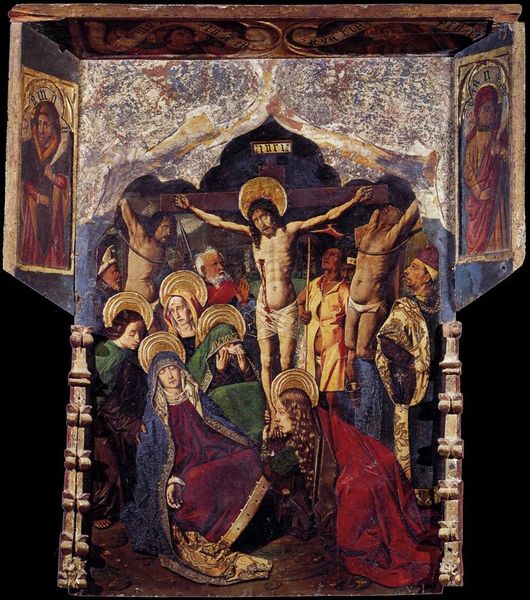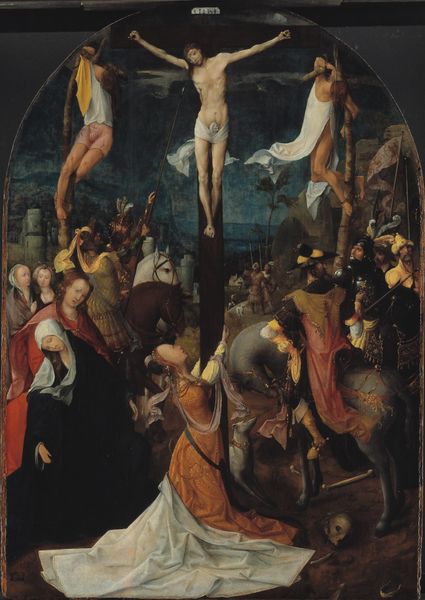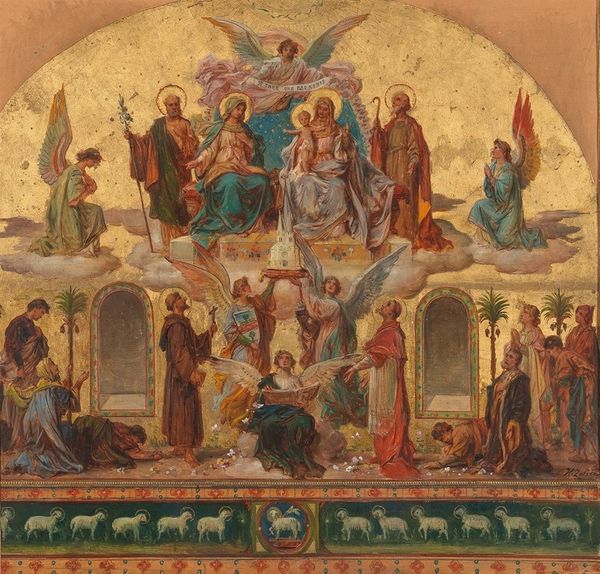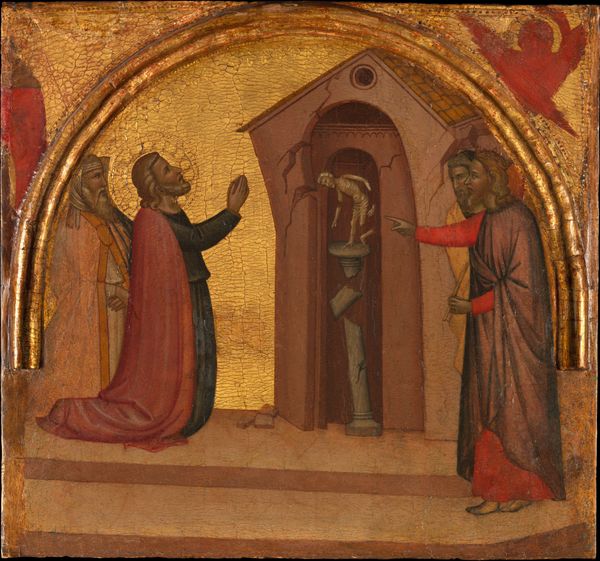
panel, tempera, painting
#
panel
#
narrative-art
#
tempera
#
painting
#
figuration
#
oil painting
#
soldier
#
horse
#
men
#
crucifixion
#
history-painting
#
italian-renaissance
#
virgin-mary
#
realism
#
christ
Dimensions: 20 3/4 x 38 1/2 in. (52.7 x 97.8 cm)
Copyright: Public Domain
Curator: What a striking composition! Andrea di Bartolo's "The Crucifixion," made with tempera on a panel between 1389 and 1428. It's currently displayed at the Metropolitan Museum of Art. Editor: It immediately strikes me with a strong emotional intensity. The vertical alignment of the crosses contrasted by the turmoil and commotion of figures underneath generates a rather somber and dramatic viewing experience. Curator: Absolutely. This painting provides a crucial insight into the socio-political functions of art during the Italian Renaissance. The painting is a tool that offers a lens into the social construction of power, sacrifice, gender and morality that shape lived realities of that historical era. Note the central figure of Christ - what statement does it make to see Him displayed in the central, largest manner as if floating against a flattened gold background in relation to all others present? Editor: It’s interesting how Bartolo manipulates the flattening effect you described by implementing these stylistic choices of a gold background and vertical composition that visually segregates Christ and his divinity from the masses that occupy the same space below. Curator: And look at the way the Virgin Mary is portrayed among a collective of men and women— note the dynamic among men in armor versus women in prayer on display in stark opposition to the idea of gender equality. Editor: The texture here too – particularly in the robes – emphasizes linear qualities over strictly representational volume. There’s an elegance there, even amidst the chaos, stemming from the skillful application of tempera to give the painting a more idealized feel rather than to render realism. Curator: It's hard to look away from the very raw narrative that Andrea di Bartolo delivers! One can’t forget the important conversation that arises here about this artist's ability to capture not only history, but challenge cultural and gender norms by raising poignant questions about identity in his artistic narrative. Editor: A superb intersection of technique and emotive power - indeed, a painting that invites profound observation.
Comments
No comments
Be the first to comment and join the conversation on the ultimate creative platform.
